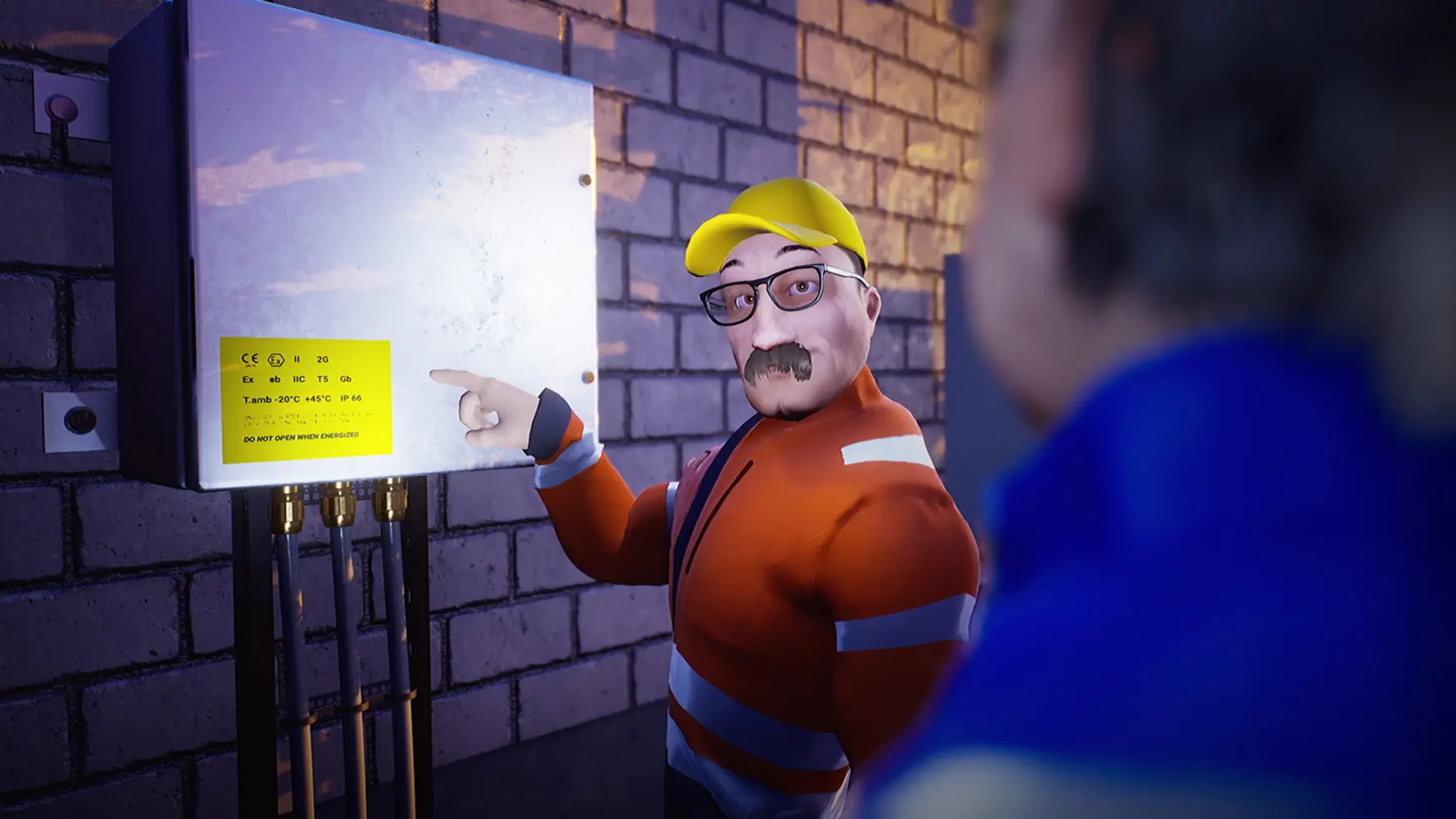Safe Behavior In Hazardous Areas
Learn how to work safely in Ex areas. The authorities require documented training in explosion prevention for all who enter Ex areas.


The goal
The course provides basic knowledge of hazardous areas and the risks associated with passing through or working in such areas.
The target group
Personnel who have access to areas where there is explosion hazard.
For example, an oil platform, processing plant, refinery, distillery, tanker, silo, petrol station or a place where an explosive atmosphere may occur due to gas, liquid vapor, liquid mist or dust mixed with air.
The topics covered
- The risk of fire and explosion
- Risks associated with hazardous areas where there is gas or dust in suspension
- Sources of ignition
- Risks and consequences
- Preventing accidents and dangerous incidents
- Working methods
- Using the correct tools
- Safety measures
- Examples of accidents and incidents
- Portable electrical equipment (handheld, portable and transportable)
- Final exam
The course is based on the Directive 1999/92/EC (Implemented in FHOSEX for Norway), IEC 60079-0, IEC 60079-10, EN 1127-1 and the Norwegian Petroleum Act.
References
The EU Directive 1992/99/EC (also known as the ATEX Workplace Directive) is about health and safety requirements for workers in explosive atmospheres. It requires that the employer develop and maintain an explosion prevention document. This document must include risk assessment, a zone chart, and documentation that all workers who will need to enter hazardous areas have received adequate and suitable training in explosion prevention. In all EU and EEA countries, this must be incorporated in national legislation.
In Norway this is implemented through the: "Regulations regarding Health and Safety in Hazardous Areas" often referred to as "FHOSEX".
Legislation pertaining to petroleum activities similarly includes competence requirements: § 9-7 Qualifications.
The licensee and others involved in petroleum activities are required to have necessary qualifications to be able to conduct the work in a satisfactory manner. Adequate training must be provided.
Technical information
System requirements
This course can be completed on a computer, tablet, or smartphone – whenever and wherever it suits you. To ensure the best possible experience, we recommend using an up-to-date web browser (such as Google Chrome, Microsoft Edge, Safari, or Firefox) and a stable internet connection with a minimum speed of 5 Mbps. If you are using a mobile network, a 4G connection or higher is recommended.
Course manual
No, a course manual is not included for this course.
Talk to us about this and other courses
Do you want to know if this course is suitable for your company? Or are you interested in learning how Trainor can help your company achieve its safety goals?
Request a demo courseTalk to an advisorWith the Trainor app, you can take eLearning courses directly from your mobile or tablet, even if you don't have coverage. The app is free, and you log in with the same username and password you usually use on trainor.no.

How we create the best learning experiences
Next-generation eLearning
Studies show that engaged learners are far more likely to absorb the information they receive. By creating eLearning courses that participants value and enjoy rather than endure, we ensure that important, safety-critical information is remembered long after the learner has completed the course.
Why choose eLearning?

Our management systems
Our solutions can be directly connected to the most popular HR systems, in addition to being accessible via general API connections. Delivering courses on Remote SCORM ensures that our eLearning courses can be taken from any LMS and still be updated without requiring manual handling from any of the companies.
Learn more about how we work